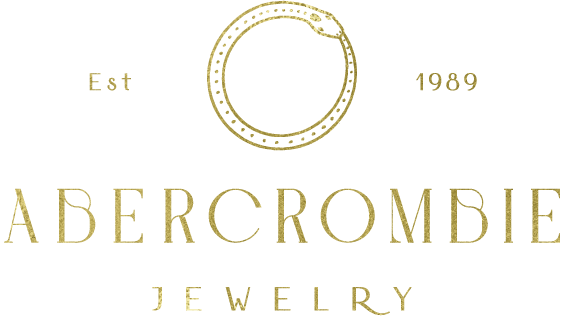Diamonds are known for their rarity, beauty, and value. The price of diamonds can vary depending on carat weight, cut, color, and clarity. In this discussion, we will explore how many diamonds you can get for $100, considering the average price range and some thought-provoking aspects of diamond pricing.
Understanding Diamond Prices
Diamond prices are determined by several factors, commonly called the “Four Cs”: carat weight, cut, color, and clarity. These factors contribute to a diamond’s overall quality and desirability, ultimately affecting its price. It’s important to note that diamond prices are not linear; they increase exponentially with higher quality.
The Average Price of a Diamond
To establish a baseline, we need to consider the average price of a diamond. The cost per carat can vary significantly, ranging from a few hundred dollars to tens of thousands. For this discussion, the average price per carat is around $5,000.
Calculating Carat Weight
Carat weight refers to the size of a diamond and is often one of the most noticeable factors in its appearance. To determine how many diamonds you can get for $100, we must divide the total budget by the average price per carat.
Calculation: $100 / $5,000 = 0.02 carats
Considering the Size
Now that we have calculated the carat weight, it’s essential to understand the size and visual impact of a 0.02-carat diamond. Remember that carat weight doesn’t directly correlate to the physical size of a diamond. It represents the weight, but the dimensions can vary depending on the cut and shape.
Quality Factors
Apart from carat weight, the other three Cs (cut, color, and clarity) play a significant role in diamond pricing. Diamonds with higher cut grades, color grades closer to colorless, and better clarity are generally more expensive. It’s important to consider that diamonds within the $100 budget will likely have lower quality in these aspects.
Alternative Options
Alternative options exist, while more than $100 might be needed to purchase a traditional diamond. For example, lab-grown, synthetic, or man-made diamonds offer a more affordable choice. These diamonds have the same physical and chemical properties as natural diamonds but are created in a laboratory, resulting in lower prices.
Value Beyond Carat Weight
When considering the purchase of diamonds, it’s essential to remember that their value extends beyond carat weight and price. The emotional significance, sentimentality, and personal preferences associated with diamonds can make them priceless in the eyes of the beholder.
Factors Influencing Diamond Prices
In addition to the Four Cs mentioned earlier (carat weight, cut, color, and clarity), several other factors can influence diamond prices.
These factors include market demand, diamond shape, fluorescence, and the presence of certifications from reputable grading laboratories. Understanding these additional factors can provide a more comprehensive view of diamond pricing and help make informed decisions when purchasing within a given budget.
Conclusion
For $100, you can expect to get a diamond with a carat weight of around 0.02 carats, assuming the average price per carat is $5,000. However, it’s crucial to acknowledge that diamonds within this budget may have lower cut, color, and clarity quality.
Exploring alternative options like lab-grown diamonds could provide more affordable choices. Ultimately, the value of a diamond lies not only in its physical properties but also in the emotions and sentiments it represents.
FAQs
What are the “Four Cs” of diamond grading?
The “Four Cs” refer to a carat’s weight, cut, color, and clarity. These factors are used to evaluate and determine the quality and value of a diamond.
Why do diamond prices vary so much?
Diamond prices can vary due to differences in the four Cs and market demand, rarity, and other factors. Higher-quality diamonds with excellent cut, color, and clarity generally command higher prices.
Can I get a high-quality diamond within a limited budget?
While finding a high-quality diamond within a limited budget may be challenging, options are available. Choosing smaller carat weights, lower color grades, or exploring lab-grown diamonds can offer more affordable options.
Are lab-grown diamonds an excellent alternative to natural diamonds?
Lab-grown diamonds are becoming increasingly popular due to their lower prices and ethical considerations. They possess the same physical and chemical properties as natural diamonds and can be an excellent alternative for those seeking value and affordability.
How vital is diamond cut in terms of pricing?
Diamond cut is crucial in a diamond’s overall appearance and brilliance. Well-cut diamonds reflect light better, resulting in enhanced sparkle. Higher-quality cuts often come at a premium price due to the skill and precision required during the cutting process.
Are there any additional costs to consider when purchasing a diamond?
Yes, it’s essential to consider additional costs such as sales tax, certification fees (for graded diamonds), and potential costs for resizing, setting, or any customization desired.
Can I negotiate the price of a diamond?
Diamond prices are generally less negotiable than other commodities. However, some room for negotiation may be possible, especially when purchasing from independent jewelers or during promotional sales.
What is the significance of diamond certification?
Diamond certification from reputable grading laboratories (such as GIA or AGS) provides an unbiased evaluation of a diamond’s quality and authenticity. It assures that the diamond meets specific standards and helps determine its value.
How can I protect my investment in diamonds?
To protect your investment, consider insuring your diamond, storing it securely, and having regular professional cleanings and inspections. Keeping the diamond’s certification and any relevant documents safe is also essential for future reference.
Are there other factors besides the Four Cs to consider when purchasing a diamond?
Yes, personal preferences, the reputation of the jeweler or retailer, return policies, warranties, and after-sales services are also essential factors to consider when purchasing a diamond.
